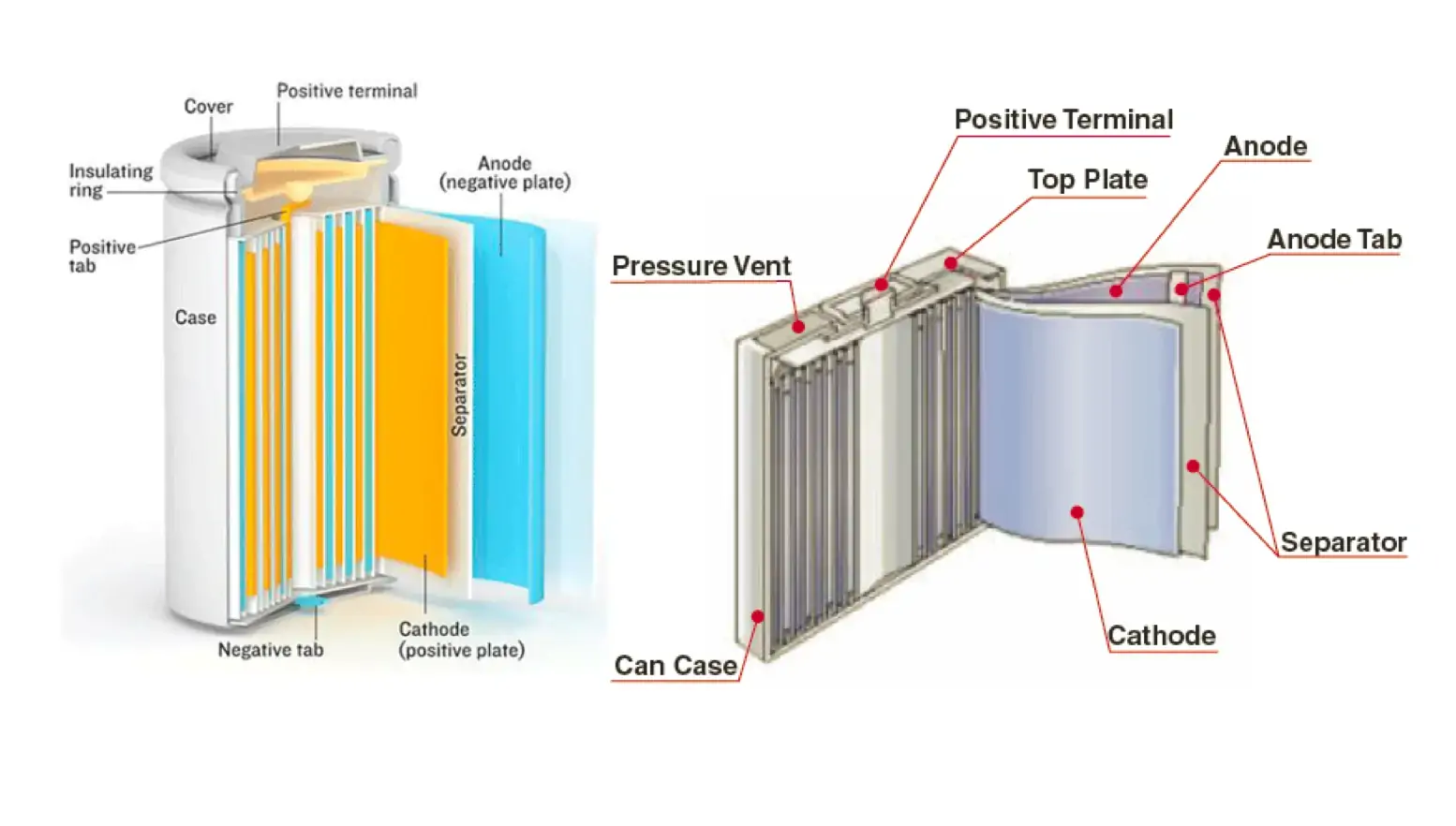In the realm of battery technology, two primary designs have emerged as dominant players: cylindrical batteries and prismatic batteries. Each offers its own set of advantages and disadvantages, catering to diverse applications across various industries. Understanding the disparities between these two battery types is crucial for making informed decisions regarding their implementation. Let's delve into the intricacies of cylindrical batteries and prismatic batteries to discern their disparities comprehensively.

Cylindrical batteries, as the name suggests, possess a cylindrical form factor. They are typically constructed with a spirally wound electrode and separator assembly, encased in a cylindrical metal shell. This design allows for efficient space utilization and excellent thermal management.
Contrary to cylindrical batteries, prismatic batteries feature a rectangular or square shape. They are assembled using stacked layers of electrodes and separators enclosed within a flat, pouch-like structure. This design offers flexibility in terms of shape and size but may present challenges in thermal dissipation.
Cylindrical batteries often exhibit higher energy density compared to their prismatic counterparts. The cylindrical design enables a more compact arrangement of active materials, maximizing the energy storage capacity within a given volume.
Prismatic batteries, while offering advantages in terms of shape and space utilization, may lag behind cylindrical batteries in terms of energy density. The flat, stacked configuration limits the packing efficiency, resulting in slightly lower energy storage capacity per unit volume.
Several performance factors differentiate cylindrical batteries from prismatic batteries, including temperature sensitivity, rate capability, and safety concerns.
Cylindrical batteries tend to exhibit better thermal stability due to their efficient heat dissipation mechanism. Prismatic batteries, on the other hand, may experience temperature fluctuations more prominently, affecting their performance and longevity.
Cylindrical batteries often boast superior rate capability, allowing for rapid charging and discharging without compromising overall performance. Prismatic batteries may have limitations in this aspect, especially when subjected to high current demands.
Both cylindrical and prismatic batteries are subject to safety concerns, albeit to varying degrees. Cylindrical batteries may pose a higher risk of thermal runaway due to their compact design, while prismatic batteries may be prone to puncture-related hazards.

The suitability of cylindrical and prismatic batteries varies across different industries and applications.
Cylindrical batteries are commonly employed in electric vehicles (EVs) and hybrid electric vehicles (HEVs) due to their high energy density and robust performance. Prismatic batteries may find applications in smaller electric vehicles or auxiliary systems.
Prismatic batteries are favored in consumer electronics such as smartphones, tablets, and laptops, where slim form factors and customized shapes are essential. Cylindrical batteries may be utilized in larger devices or high-power applications.
Both cylindrical and prismatic batteries play vital roles in renewable energy storage systems, such as grid-scale batteries and home energy storage units. The choice between the two depends on factors such as space availability, energy requirements, and cost considerations.
In terms of manufacturing costs, prismatic batteries may offer advantages over cylindrical batteries due to simplified assembly processes and reduced material wastage. However, the overall cost-effectiveness depends on various factors, including production volume and technological advancements.
The environmental impact of cylindrical and prismatic batteries encompasses aspects such as raw material extraction, manufacturing processes, and end-of-life disposal. Efforts are underway to improve the sustainability of battery technologies through recycling initiatives and eco-friendly materials.
As the demand for energy storage solutions continues to rise, ongoing research and development efforts are focused on enhancing the performance, safety, and sustainability of both cylindrical and prismatic batteries. Innovations such as solid-state electrolytes, advanced electrode materials, and manufacturing optimizations are poised to shape the future of battery technology.
In conclusion, the disparities between cylindrical batteries and prismatic batteries encompass various factors, including structure and design, energy density, performance characteristics, application suitability, cost considerations, environmental impact, and future trends. While cylindrical batteries offer advantages in terms of energy density and performance, prismatic batteries excel in flexibility and form factor. Understanding these differences is essential for selecting the most suitable battery solution for specific applications, ensuring optimal performance, efficiency, and sustainability.
Which battery type is better for electric vehicles: cylindrical or prismatic?
Are prismatic batteries safer than cylindrical batteries?
What are the main differences in manufacturing processes between cylindrical and prismatic batteries?
Can prismatic batteries achieve the same energy density as cylindrical batteries?
How do cylindrical and prismatic batteries contribute to renewable energy storage?
Next:Is Lithium Trolling Batteries Right For Your Needs?
Previous:Energy Vault China gravity ESS project connected to grid; starts building three others